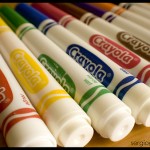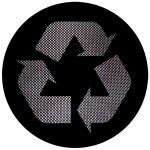- By Blanca Myers
- August 21, 2012
 Surfers are some of the most ardent environmentalists, yet their sport is awash in petrochemicals and carcinogens, from neoprene wetsuits and urethane leashes to polyurethane boards and epoxy. Danny Hess thinks there’s a better way, and he’s made bringing sustainability to surfing his life’s work.
Surfers are some of the most ardent environmentalists, yet their sport is awash in petrochemicals and carcinogens, from neoprene wetsuits and urethane leashes to polyurethane boards and epoxy. Danny Hess thinks there’s a better way, and he’s made bringing sustainability to surfing his life’s work.
The 37-year-old surfboard shaper is making waves in the $7 billion surfing industry with his adoption of salvaged wood, natural finishes and organic resins. Hess wants to transform how surfboards are made — and how they’re used. His boards are built to last, an anomaly in a sport where surfers might trash a board or two every season.
“What I’m trying to do is build heirloom surfboards that are passed on from father to son over many generations, rather than these disposable things that we’re just consuming,” Hess says. “The idea is that you just buy one and take care of it and hopefully you don’t have to come back and buy another surfboard.”
As a child, Hess possessed a keen interest in the outdoors and working with his hands. He was using beach trash to make bodysurfing handplanes and was shaping surfboards before he could even drive. Before founding Hess Surfboards, he lived in a straw-bale house in Colorado, studied sustainable architecture at the San Francisco Institute of Architecture, built tree houses and worked as a licensed contractor. But even as his remodeling business prospered, Hess felt frustrated and dissatisfied by his career. A dozen years ago, Hess found himself spending his spare time experimenting with surfboard technology to escape the creatively stifling world of zoning ordinances, building codes and government regulations.
His work as a contractor provided a solid foundation for his work as a surfboard shaper.
“One day I had this “aha” moment where I realized I could create these molds, like the ones I was using to bend wood for cabinet doors, for surfboards,” Hess says.
Wood surfboards are nothing new, of course. Boards have long been made of wood and natural oils, and some surfers have never ridden anything else. But polyurethane has been the standard for half a century, mostly because it is cheaper, lighter and easier to use than wood.
Polyurethane was originally developed as insulation for aircraft and refrigerators during World War II. Early pioneers like Bob Simmons, the father of the modern surfboard, began experimenting with foam in the late 1940s, and shapers like Whitey Harrison and Hobie Alter honed the process through the 1950s. By the early 1960s, polyurethane was the go-to material.
Surprisingly, the fundamental technology has changed little in the decades since, largely because Clark Foam dominated the field. At its height, the California company supplied more than 90 percent of U.S. market for the inexpensive foam slabs, called blanks, that shapers use to make surfboards.
But polyurethane is nasty stuff. It contains toluene diisocyanate (TDI), a cyanide-rich compound that, when heated, releases fumes that can cause asthma, cardiac arrest, respiratory failure, hearing and vision loss, and other problems. Increasing harassment from state and federal environmental regulators prompted Clark Foam — where, media reports later showed, there was one TDI-related death — tosuddenly close its doors on Dec. 5, 2005. It simply shut down without warning, an incident known asBlank Monday.
“There was just no foam one day,” Hess says.
Clark Foam’s closure prompted a discussion among surfers and shapers about the sustainability of their sport, a topic Hess was well-versed in. He started using natural materials in 2000, drawing ideas and inspiration drawn from luthiers, boatmakers and other artisans. Going green, he says, is good for surfing and for surfers.
“I think our bodies are more in tune with organic materials,” Hess says. “My boards feel more natural than foam boards. I get a lot of people saying my boards feel really different, but really familiar at the same time.”
Today, he hand crafts 150 boards each year using raw materials like reclaimed poplar, cork and blocks of recycled expanded polystyrene. The surfboards, which range in price from $1,295 to $1,800, take about 10 and 16 hours to build. Whereas conventional shapers carve a big slab of polyurethane, called a “blank”, down to the shape they want, Hess builds his boards from the interior. First, he crafts an interior skeleton for his boards using a system of vacuums, one of 20 molds, and autoclaves. Hess then fills the framework with the foam, covers it all with salvaged wood and seals it with a sap-derived epoxy.
“I’m building from the internal frame structure to the exoskeleton of wood,” Hess said. “I have a system of vacuum molds and forms, autoclaves, that I use to create a specific curve or shape for the wood.”
Most surfers are initially attracted to Hess’ surfboards because of their eye-catching design aesthetic, but they also offer more flex. “When you ride them you find they have a really unique springy responsiveness. The way the strength is built along the rails gives you an immediate responsiveness to flex. And they’re light,” said Luke Bartels, a longtime Hess Surfboard owner and furniture designer in San Francisco.
Each of Hess’ boards are constructed at Woodshop, a studio Hess shares with three shopmates not far from San Francisco’s Ocean Beach. Being so close to the ocean makes R&D a breeze, as the beach is but a quick skateboard ride away. That led Hess to his latest endeavor – making skateboard decks using scraps lying around the shop.
“These skateboards are made for cruising down to the beach to check the surf and getting a six pack on the way back,” Hess says with a laugh. His skateboards echo the experience of surfing.
“When you’re skating on these boards and you flex into a turn you spring out,” said Hess. “It really feels like you’re surfing.”
It’s all about the surfing for Hess, and bringing innovation to the sport. He isn’t embracing sustainability for sustainability’s sake, but because he believes natural materials are genuinely better.
“My whole motivation has been about moving the ball forward for what surfboards could be, rather than sitting on a technology for 50 years,” Hess explains. “I have an idea, I come into my shop, and I do it. I’m always learning.”
That attitude led Hess to embrace Super Sap, the first USDA BioPreferred Certified liquid epoxy resin. And he’s experimenting with organic foam and salvaged redwood in a continued quest to build a truly green surfboard.
“My ultimate goal has always been to build a surfboard from locally sourced salvaged wood that contains no petrochemicals,” Hess says. “I don’t think we’re too far off from it.”

 Surfers are some of the most ardent environmentalists, yet their sport is awash in petrochemicals and carcinogens, from neoprene wetsuits and urethane leashes to polyurethane boards and epoxy. Danny Hess thinks there’s a better way, and he’s made bringing sustainability to surfing his life’s work.
Surfers are some of the most ardent environmentalists, yet their sport is awash in petrochemicals and carcinogens, from neoprene wetsuits and urethane leashes to polyurethane boards and epoxy. Danny Hess thinks there’s a better way, and he’s made bringing sustainability to surfing his life’s work.




Things labeled “just add water” are usually highly-processed foods and novelty bath tub toys, but new research from the UK’s National Physical Laboratory may change all of that.